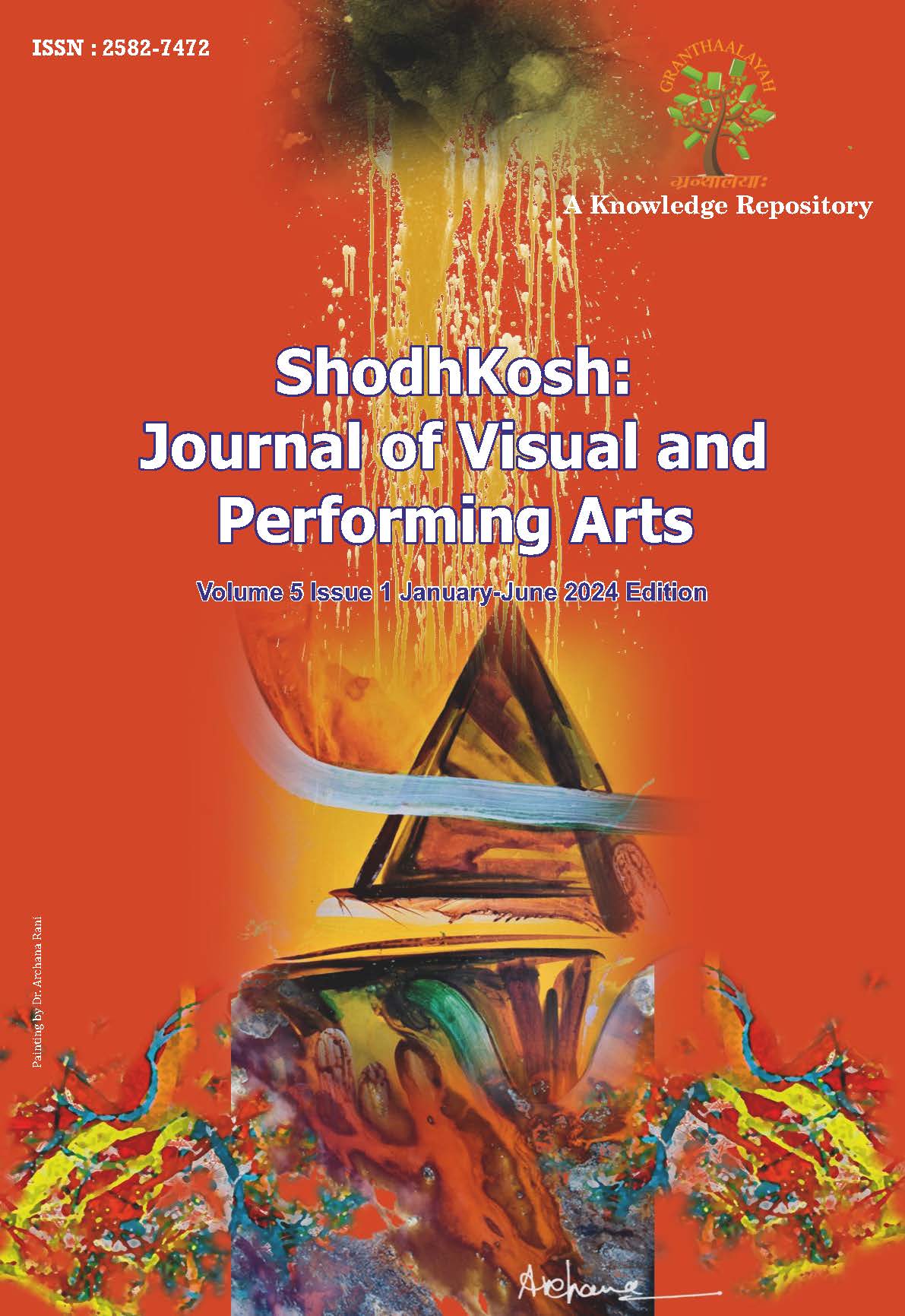EFFECTS OF FAMILY DYNAMICS ON PSYCHOPATHIC TRAITS AND CRIMINAL TENDENCIES AMONG NON-CRIMINAL PEOPLE
DOI:
https://doi.org/10.29121/shodhkosh.v5.i1.2024.1734Keywords:
Psychopathy, Family Dynamics, Parental Supervision, Inconsistent Discipline, Early Intervention, Non-Criminal Population, Preventive StrategiesAbstract [English]
The present study investigates the impact of family dynamics on the development of psychopathic traits in non-criminal populations. Utilizing a sample size of 200 participants, the study employs the Hare Psychopathy Checklist-Revised (PCL-R) to quantify psychopathic traits and examine the association with specific family patterns. The results indicate that poor parental supervision, inconsistent discipline, and high family conflict are significantly correlated with higher levels of psychopathic traits. Quantitative analysis reveals that individuals with high scores on the PCL-R are more likely to report negative family dynamics. Qualitative data from interviews and observations support these findings, highlighting the critical role of early family interactions in shaping psychological development. The study underscores the importance of early identification and family-based interventions to mitigate the development of psychopathic traits. These findings contribute to the broader understanding of psychopathy and offer valuable insights for developing targeted preventive strategies.
References
American Psychological Association. (2020). Publication Manual of the American Psychological Association (7th ed.). Washington, DC : Author.
Bowlby, J. (1969). Attachment and loss. Basic Books.
Cleckley, H. (1941). The mask of sanity : An attempt to clarify some issues about the so-called psychopathic personality. Mosby.
Cohen, J. (1988). Statistical power analysis for the behavioral sciences (2nd ed.). Hillsdale, NJ : Lawrence Erlbaum Associates.
Dadds, M. R., & Hawes, D. J. (2006). Integrated family intervention for child conduct problems: An approach to prevention and treatment. Australian & New Zealand Journal of Psychiatry, 40(6-7), pp. 513–523.
Dishion, T. J., et al. (1991). Family, peer, and neighborhood influences on early adolescent antisocial behavior. In R. J. McMahon & R. DeV. Peters (Eds.), Behavior disorders of adolescence : Research, intervention, and policy in clinical and school settings (pp. 59–95). Allyn & Bacon.
Farrington, D. P. (1995). The development of offending and antisocial behavior from childhood: Key findings from the Cambridge Study in Delinquent Development. Journal of Child Psychology and Psychiatry, 36(6), 929-964. DOI: https://doi.org/10.1111/j.1469-7610.1995.tb01342.x
Frick, P. J., & White, S. F. (2008). Research on psychopathy and antisocial behavior in children and adolescents : A developmental perspective. In Handbook of Psychopathy (pp. 357-374). The Guilford Press.
Garbarino, J., & Sherman, D. (1980). High-risk neighborhoods and high-risk families: The human ecology of child maltreatment. Child Development, 51(1), 188-198. DOI: https://doi.org/10.1111/j.1467-8624.1980.tb02525.x
Hare, R. D. (1991). The Hare Psychopathy Checklist-Revised (PCL-R). Multi-Health Systems. DOI: https://doi.org/10.1037/t01167-000
Hinshaw, S. P. (1992). Externalizing behavior problems and academic underachievement in childhood and adolescence : Causal relationships and underlying mechanisms. Psychological Bulletin, 111(1), 127-155. DOI: https://doi.org/10.1037//0033-2909.111.1.127
Jaffee, S. R., et al. (2007). Individual, family, and neighborhood factors distinguish resilient from non-resilient maltreated children: A cumulative stressors model. Child Abuse & Neglect, 31(3), 231-253. DOI: https://doi.org/10.1016/j.chiabu.2006.03.011
Kazdin, A. E. (1997). Conduct disorders in childhood and adolescence. Sage Publications.
Kohlberg, L. (1984). The psychology of moral development: The nature and validity of moral stages. Harper & Row.
Lahey, B. B., et al. (1999). Conduct disorder and juvenile delinquency: Trends and directions for future research. Journal of Abnormal Child Psychology, 27(3), 251-264.
Loeber, R., & Stouthamer-Loeber, M. (1986). Family factors as correlates and predictors of juvenile conduct problems and delinquency. In M. Tonry & N. Morris (Eds.), Crime and justice : An annual review of research (Vol. 7, pp. 29-149). University of Chicago Press.) DOI: https://doi.org/10.1086/449112
Lynam, D. R. (1996). Early identification of chronic offenders: Who is the fledgling psychopath? Psychological Bulletin, 120(2), 209-234. DOI: https://doi.org/10.1037//0033-2909.120.2.209
McCord, J. (1979). Some child-rearing antecedents of criminal behavior in adult men. Journal of Personality and Social Psychology, 37(9), 1477-1486. DOI: https://doi.org/10.1037//0022-3514.37.9.1477
Minuchin, S. (1974). Families and family therapy. Harvard University Press. DOI: https://doi.org/10.4159/9780674041127
Moffitt, T. E. (1993). Adolescence-limited and life-course-persistent antisocial behavior: A developmental taxonomy. Psychological Review, 100(4), 674-701. DOI: https://doi.org/10.1037//0033-295X.100.4.674
Olweus, D. (1993). Bullying at school: What we know and what we can do. Blackwell Publishing.
Patterson, G. R., Reid, J. B., & Dishion, T. J. (1992). Antisocial boys. Castalia Publishing Company.
Robins, L. N. (1978). Sturdy childhood predictors of adult antisocial behavior : Replications from longitudinal studies. Psychological Medicine, 8(4), 611-622. DOI: https://doi.org/10.1017/S0033291700018821
Rutter, M., & Quinton, D. (1984). Parental psychiatric disorder : Effects on children. Psychological Medicine, 14(4), 853-880. DOI: https://doi.org/10.1017/S0033291700019838
Smith, J. A., & Osborn, M. (2008). Interpretative phenomenological analysis. In J. A. Smith (Ed.), Qualitative psychology : A practical guide to research methods (pp. 53-80). London : SAGE.
Steinberg, L. (2001). We know some things : Parent-adolescent relationships in retrospect and prospect. Journal of Research on Adolescence, 11(1), 1-19. DOI: https://doi.org/10.1111/1532-7795.00001
Straus, M. A. (1979). Measuring intrafamily conflict and violence : The conflict tactics (CT) scales. Journal of Marriage and the Family, 41(1), 75-88. DOI: https://doi.org/10.2307/351733
Thomas, D. R. (2006). A general inductive approach for analyzing qualitative evaluation data. American Journal of Evaluation, 27(2), 237-246. DOI: https://doi.org/10.1177/1098214005283748
Widom, C. S. (1989). The cycle of violence. Science, 244(4901), 160-166. DOI: https://doi.org/10.1126/science.2704995
Zahn-Waxler, C., et al. (1992). Development of empathy in children with disruptive behavior disorders. Development and Psychopathology, 4(2), 203-211
Published
How to Cite
Issue
Section
License
Copyright (c) 2024 Sunidhi Joshi, Siddharth Kumar Bansal

This work is licensed under a Creative Commons Attribution 4.0 International License.
With the licence CC-BY, authors retain the copyright, allowing anyone to download, reuse, re-print, modify, distribute, and/or copy their contribution. The work must be properly attributed to its author.
It is not necessary to ask for further permission from the author or journal board.
This journal provides immediate open access to its content on the principle that making research freely available to the public supports a greater global exchange of knowledge.































